Every plant has a growth cycle so those the grapevine.
The growth cycle of the grapevines lasts for a year but throughout the winter the vine is dormant.
Each cycle throughout the year is very important because in each cycle there are jobs to be done.
Annual growth cycle
It starts with a bud break in the spring and ends with a leaf fall in autumn.
The annual growth cycle can vary between wine regions and different vine sorts.
The growth cycle is divided into 7 different fazes which are divided into 48 different stages.
It is important to know In which stage is your vine to determine which maintenance jobs to perform in a specific faze/stage.
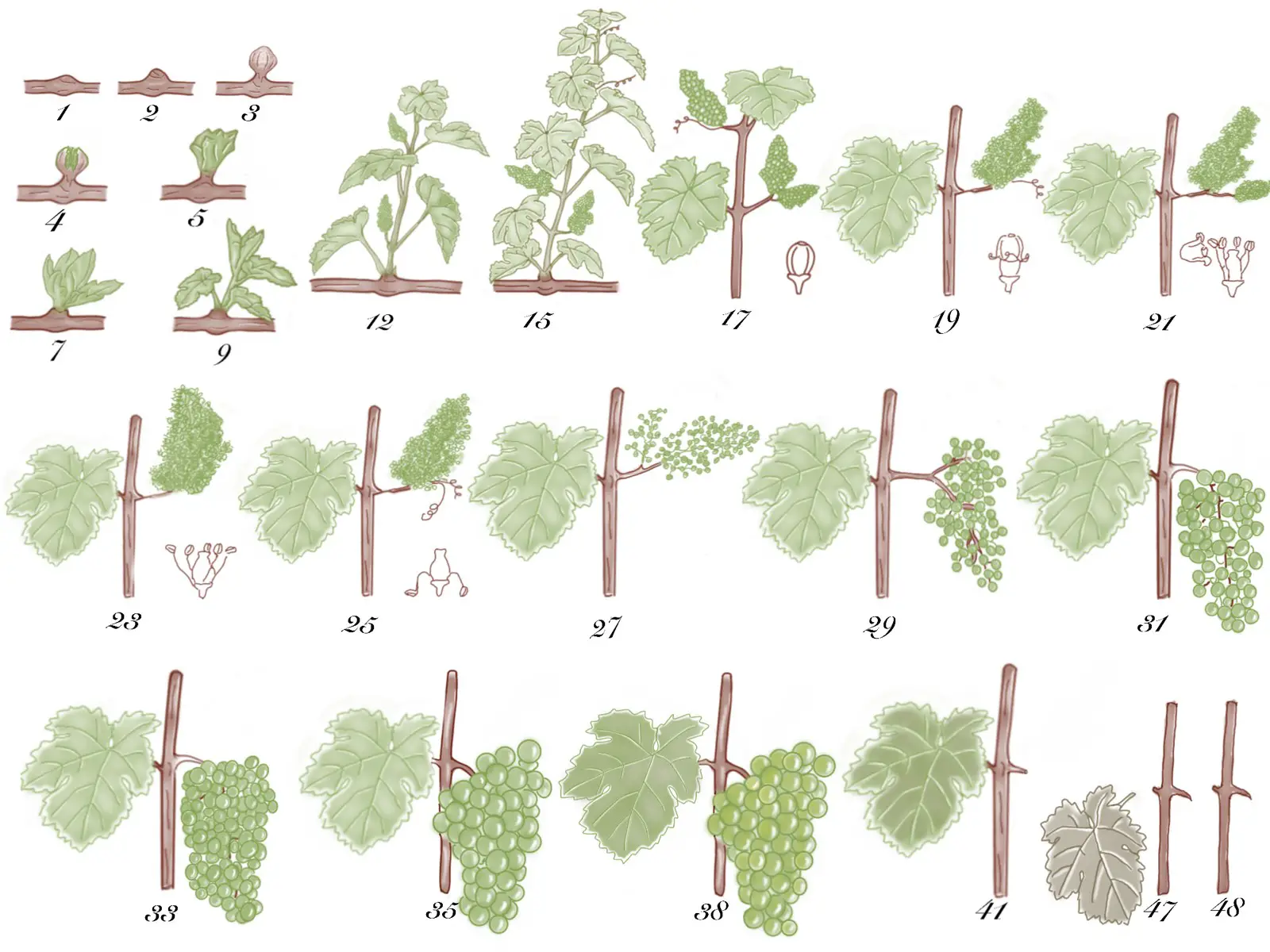
There are missing numbers because there is no visible change in these stages.
Bud growth
After winter dormancy, the first phenophase is tearing or crying, which is the first visible sign of the beginning of vegetation.
The root begins to absorb water from the soil and send it to the aboveground part of the vine. The root actually seeks to make up for the water it lost during hibernation.
We can see this in the wounds that occur during pruning in winter dormancy.
Drops of water (sap) appear on the wounds.
This increases the pressure in the buds, which will swell and flower in 15-30 days.
For this phase to begin, it is necessary to increase the temperature in the soil to a depth of 25-30 cm, ie in the root zone.
Tearing depends on the work done by the root, which means that the soil is essential to the start of tearing, and its strength.
During this phase, there are no significant losses of organic and mineral substances from the vine.
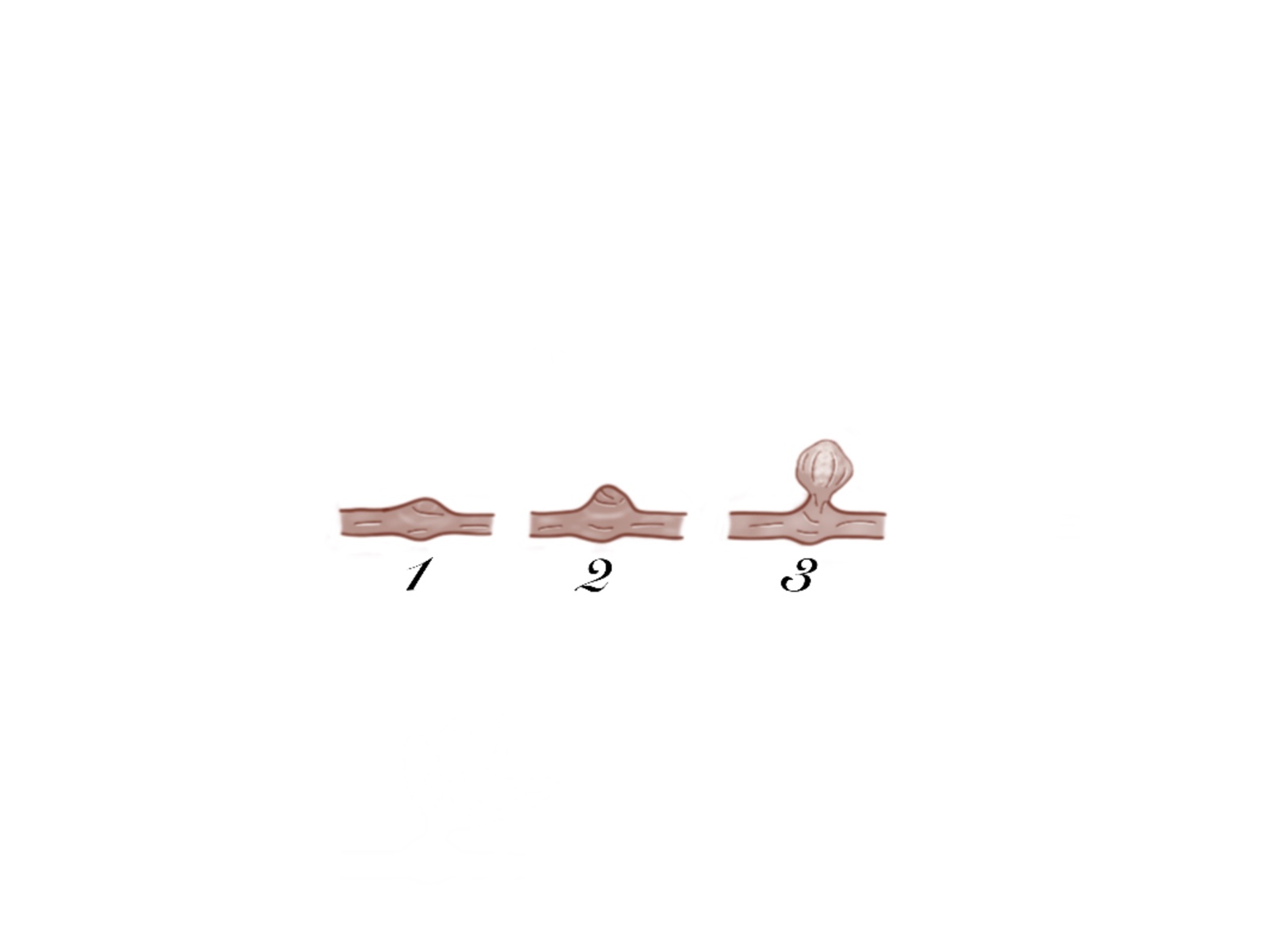
During this phase, we must carry out:
- pruning of the vineyard,
- repair of reinforcement,
- tying,
- spring cultivation,
- winter spraying.
Development of leaves and inflorescences
We believe that this phase began after the wool and the scaly leaves of the bud have parted, and the leaves begin to emerge from the bud.
This phase lasts from 40-60 days. Initially, reserves (nutrients) from the tree and roots are used to initiate growth.
Reserves are used because the leaves start to produce food only in 2/3 of their size.
Given the intensive growth of the saplings that reach 60% of their length by the end of this phase, a large amount of food is required for the development of inflorescences.
During this phase, it is important that:
- The buds open
- The saplings and leaves grow
- The development of inflorescences and flowers
- The formation of pollen
- The pistil appear
- Summer and winter buds begin to develop in the nodes of the leaves
- The flowers separate at the inflorescence, forming tendrils.
The average daily temperature over several days is required to be 7 ° C to 12 ° C.
During this period, the following works are carried out:
- Completion of tying,
- The first application of pesticides,
- Weeding,
- Pinching,
- The first insertion of saplings between wires,
- Intensive protection against diseases and pests.
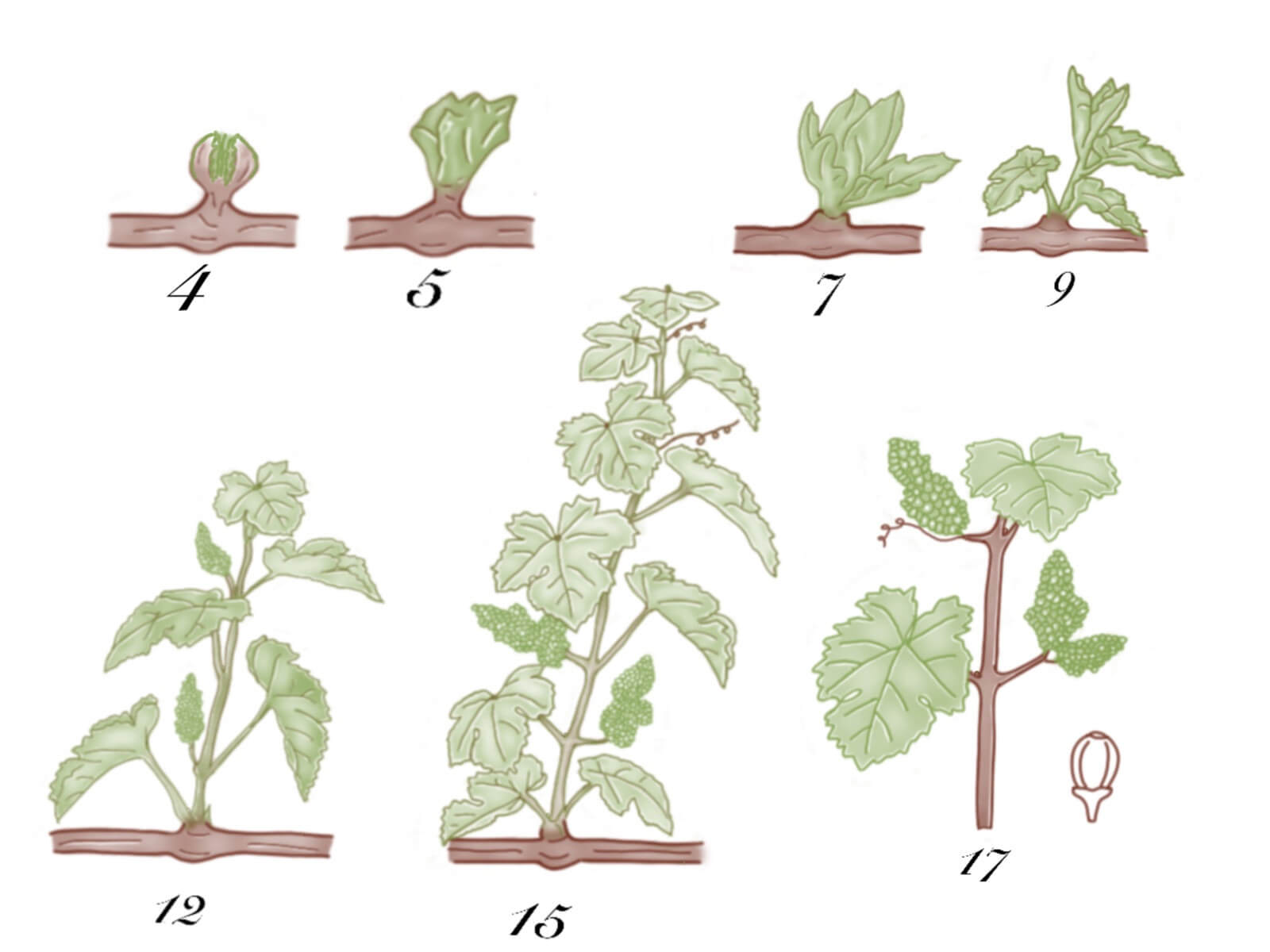
4 – Green tip (first leaf tissue visible)
5 – Rosette
7 – first leaf separated from sapling tip
9 – 2 – 3 leaf separated: saplings 2-4 cm long
12 – 5 leaves separated: saplings about 10 cm
15 – 8 leaves separated, saplings elongate rapidly; single flowers in compact groups
17 – 12 leaves separated: inflorescence well developed, single flowers separated
Fertilization and flower growth
Flowering begins with the separation of the flower cap from the flower, which means that the flower loses its cap and remains naked.
2-3 days before the flower cap is discarded, the pollen starts germinating, so self-fertilization can occur under the flower cap.
To start this phase, the temperature must be at least 15 ° C, but preferably 20 -25 ° C.
Favorable climatic conditions are:
- the sun,
- light breeze,
- favorable humidity in the air.
A light breeze helps with self-fertilization. It is important because vines with female organs need to be fertilized by other bisexual vines.
Negative conditions are:
- a strong wind (breaks the saplings)
- rainy weather
- and poor lighting
such conditions significantly reduce fertilization.
Poor fertilization results in low-quality grapes.
30 to 70% of flowers are fertilized during the inflorescence.
The beginning of flowering is when 5-10% of flowers are open.
Full bloom is when 50% are open.
The end of flowering is when 95% of fertilized flowers are opened.
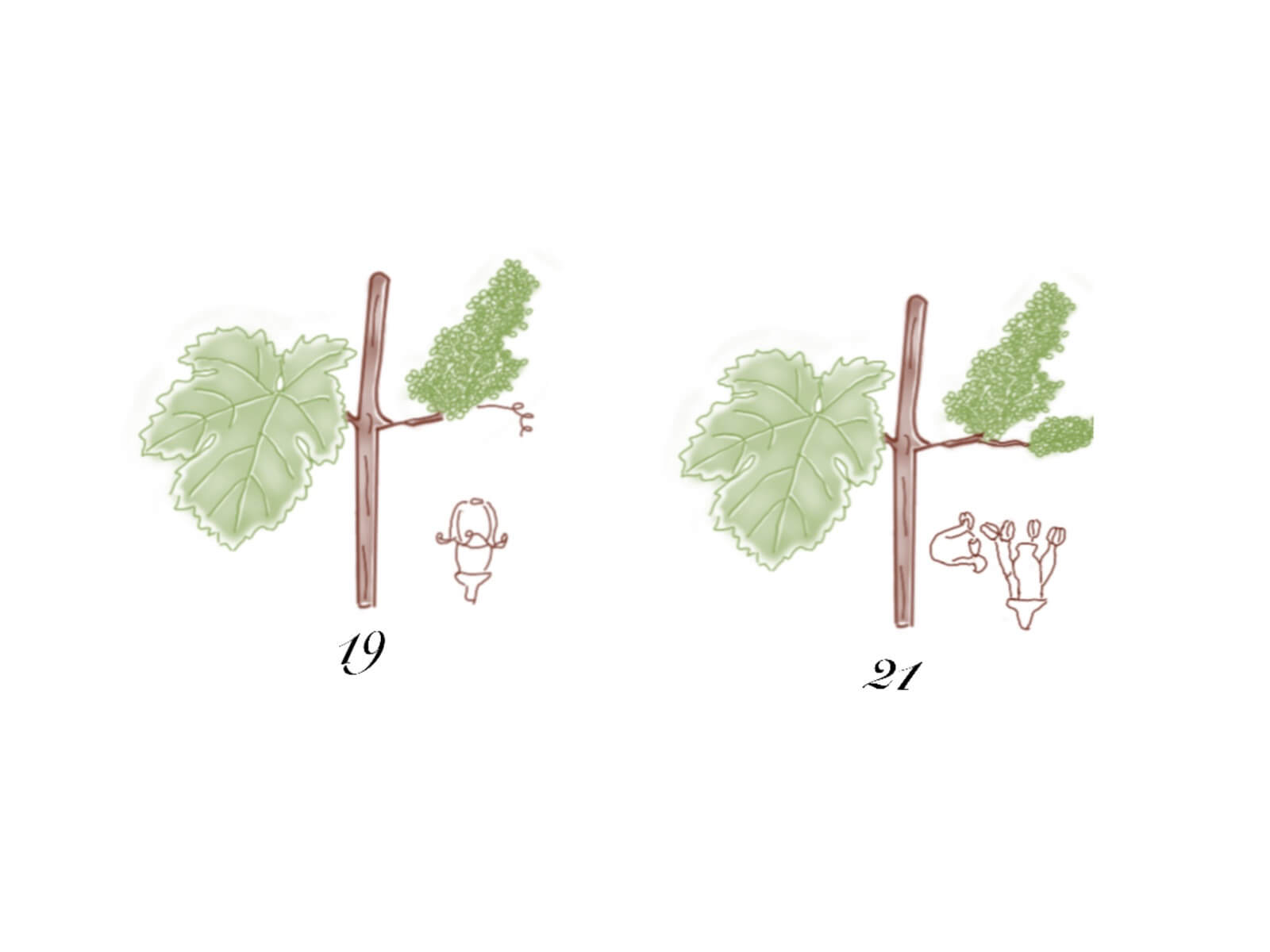
19 – About 16 leaves separated, the first flower caps fall off.
21 – 30% of the caps have fallen off.
Grape growth and formation
This phase begins at the moment of fertilization and ends with the beginning of grape ripening.
We can divide the whole period into three phases.
The first phase starts immediately after fertilization, in which there is an intensive division of berry cells, then their growth, with a slight development of the embryo.
At this stage, the growth of berries stops. In the second stage, the seeds develop and mature.
In the third phase, the sugar content is still low (3%) due to the intensive respiration of green berries, the content of organic acids increases as a product of incomplete oxidation.
During the growth of berries they increase several times, the rate of growth and development depends on factors of internal and external nature.
The most favorable temperature for reaching this phase is 25 ° to 30 ° C, however, moisture is required to achieve the desired berry size.
At the end of the phase, the amount of water decreases, the concentration of sugar is 3%, acid 3-5%. during this phase, the berries are green, hard, and perform assimilation, transpiration, and breathing.
Works that are done in this phase :
- Threshing
- Defoliation
- Soil cultivation
- In the case of table species – thinning of berries
- Ringing
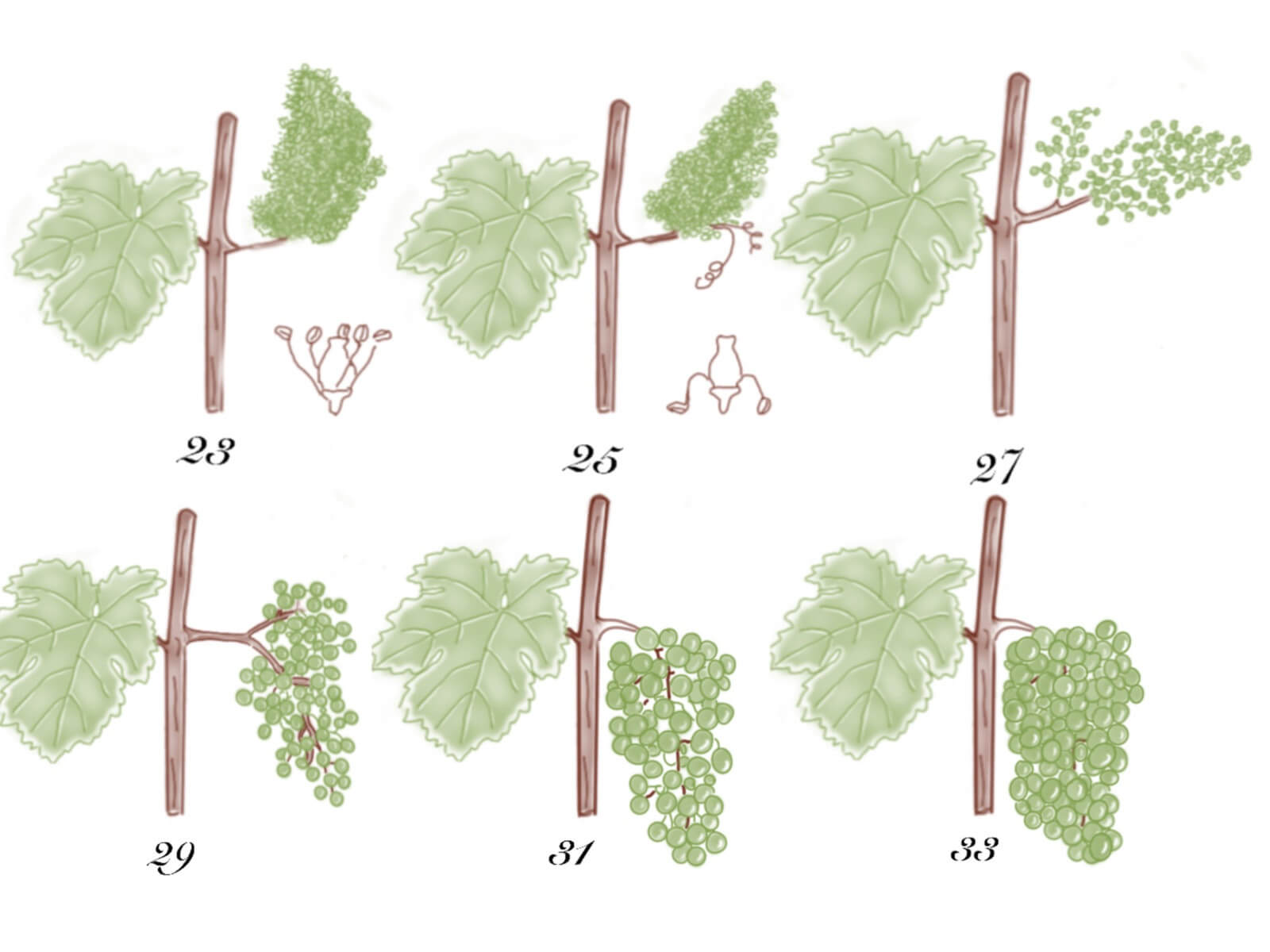
23 – 17 – 20 leaves separately, 50% of flower caps have fallen off.
25 – 80% of flower caps have fallen off.
27 – Young berries start to grow, clusters are at right angles.
29 – Berries are at the pea grain size, clusters start hanging down.
31 – Pea-size berries, clusters hanging towards below
33 – All berries have grown but they are still hard and green.
Grape ripening
This phenophase begins with the stop of berry growth and a characteristic appearance of patterns.
In this phase, the color of the skin changes, in white varieties the color changes to yellow and becomes transparent, and in black varieties, there is a gradual change of color due to the accumulation of anthocyanins.
Chemical changes reduce the concentration of total acids and increase sugar.
The berries still increase mainly at the expense of the flesh, and the weight of the seeds remains unchanged.
The seeds complete their development and become physiologically mature and this is called physiological maturity.
We also distinguish full maturity, it happens when the sugar content stops rising, the acid content stops falling.
There is also a technological maturity that strictly oats in the purpose of grapes as raw material and can be before and after full maturity.
This phase lasts from 20 to 50 days.
During this phase, the harvest is done.
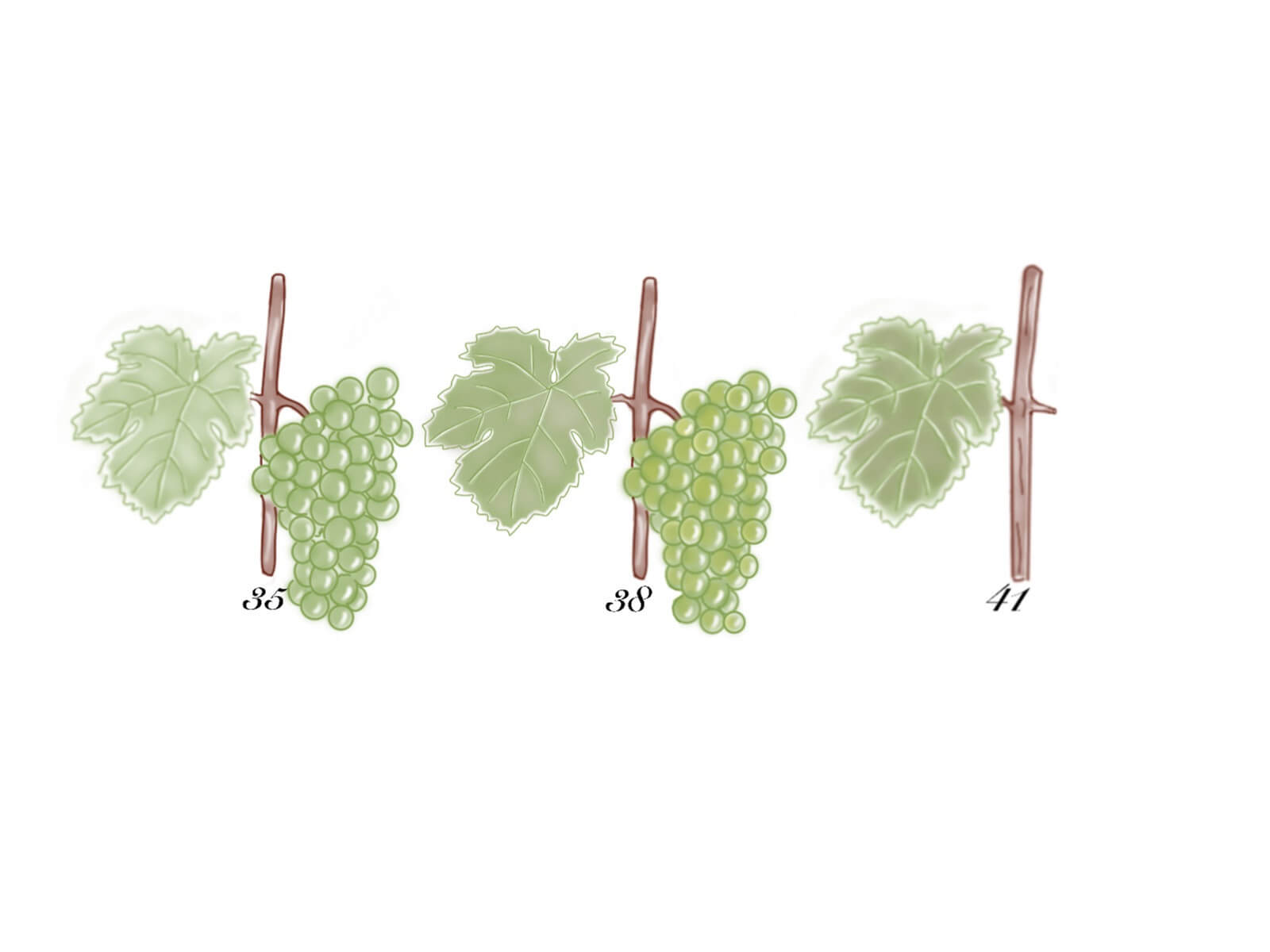
35 – Berries begin to acquire color, start showing patterns, softening
38 – berries at full maturity, ready for harvest
41 – After harvest
Preparing for winter dormancy
It starts from the physiological maturity of the grapes to the fall of the leaves.
At this stage, the vine is prepared for the winter, which means that reserve substances accumulate,
they accumulate in the twig, old wood, and root.
Winter buds with elements of fertility begin to form.
Leaf and root function gradually ceases.
The leaves dry out and fall off due to the loss of chlorophyll.
This phase ends at temperatures below 10 ° C.
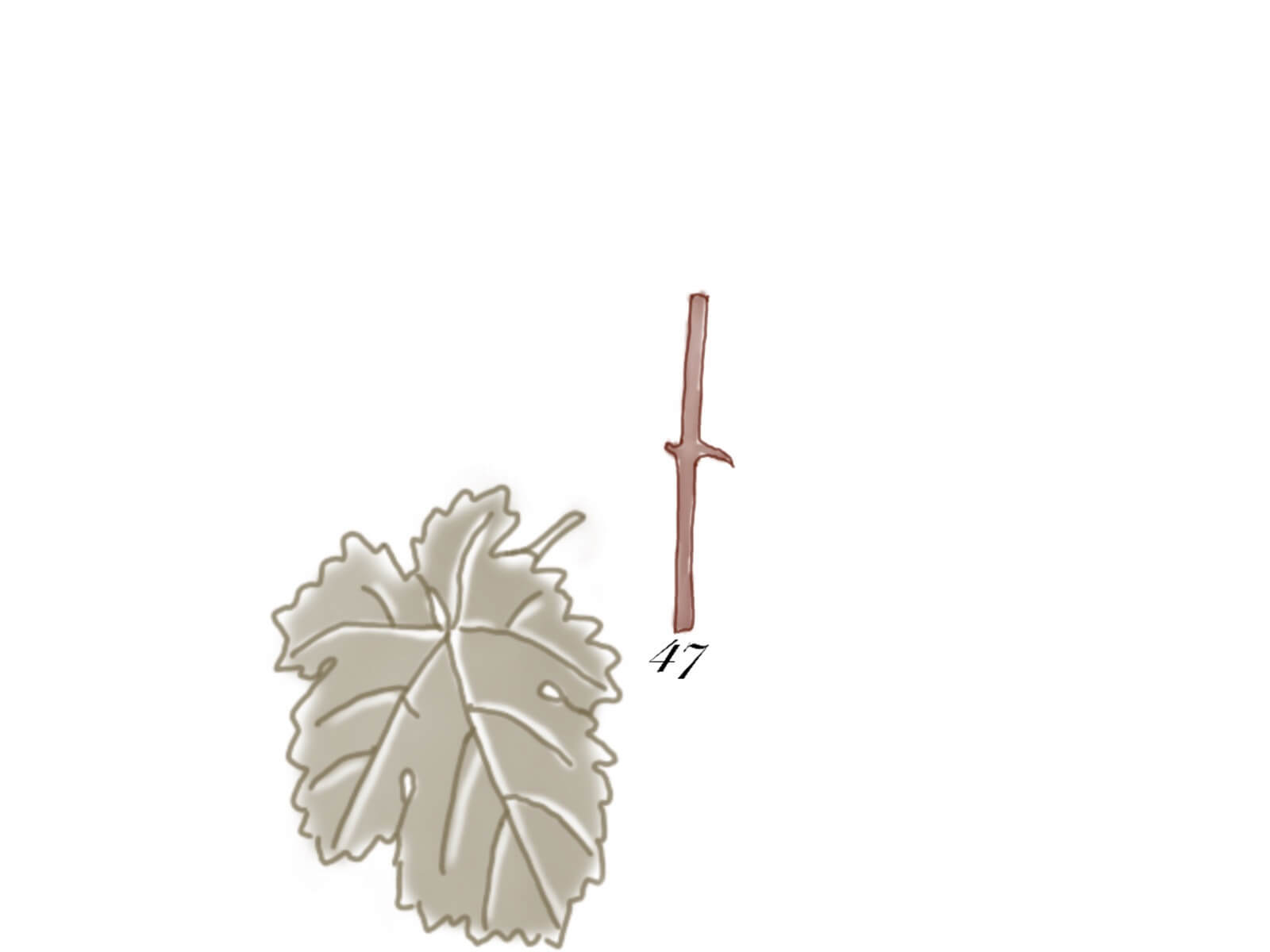
47 – Leaves falling off
Winter dormancy
Winter dormancy begins with the fall of the leaves and ends with the appearance of tears.
During this period, all the vital functions of the vine are either interrupted or very weak.
During low temperatures, to strengthen the vine, enzymatic action occurs and starch is converted into sugar.
Only bound water remains in the cells.
For this reason, the vine can tolerate low temperatures.
During this phase, a mature cut is made.
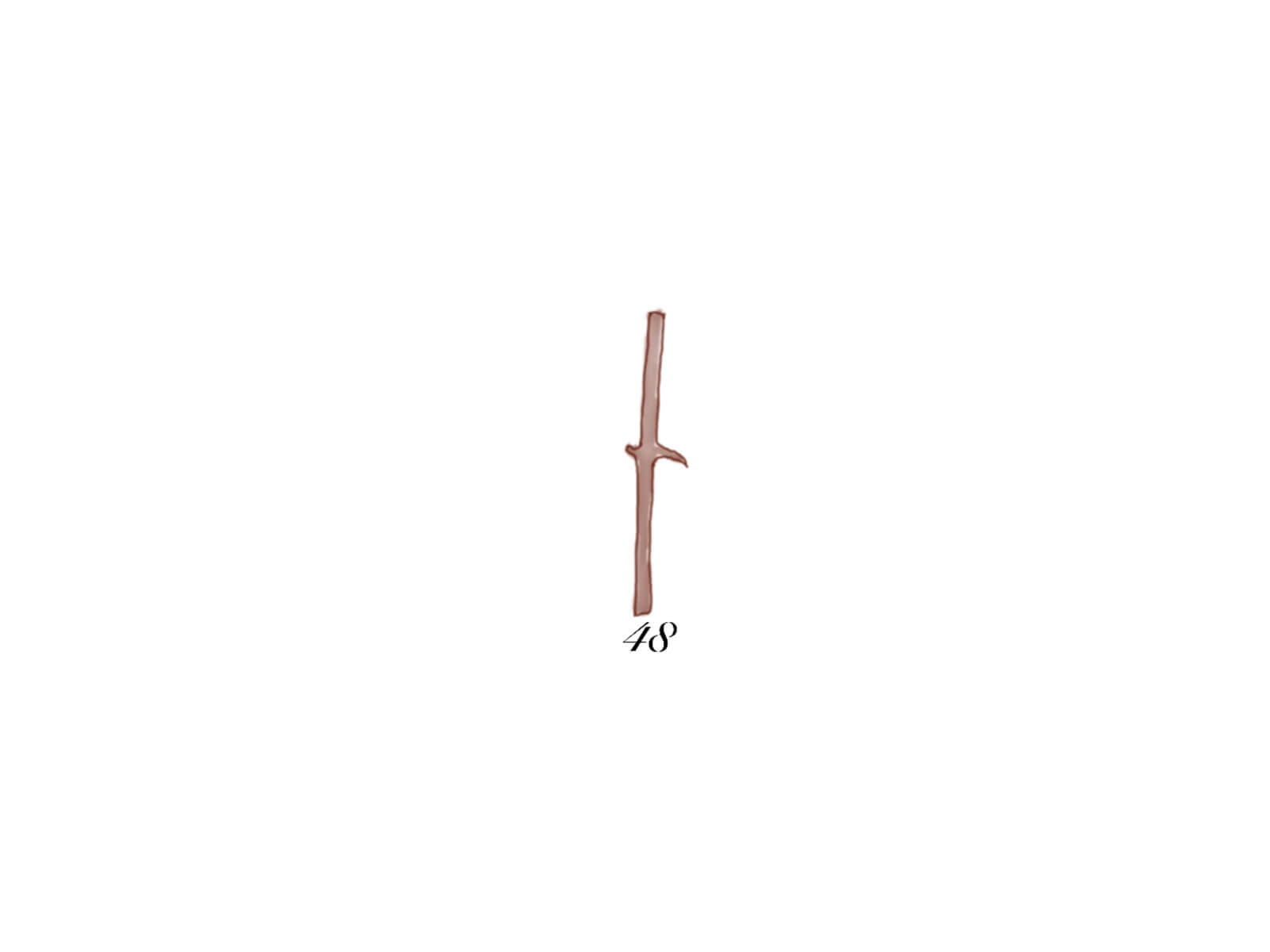
48 – Winter dormancy